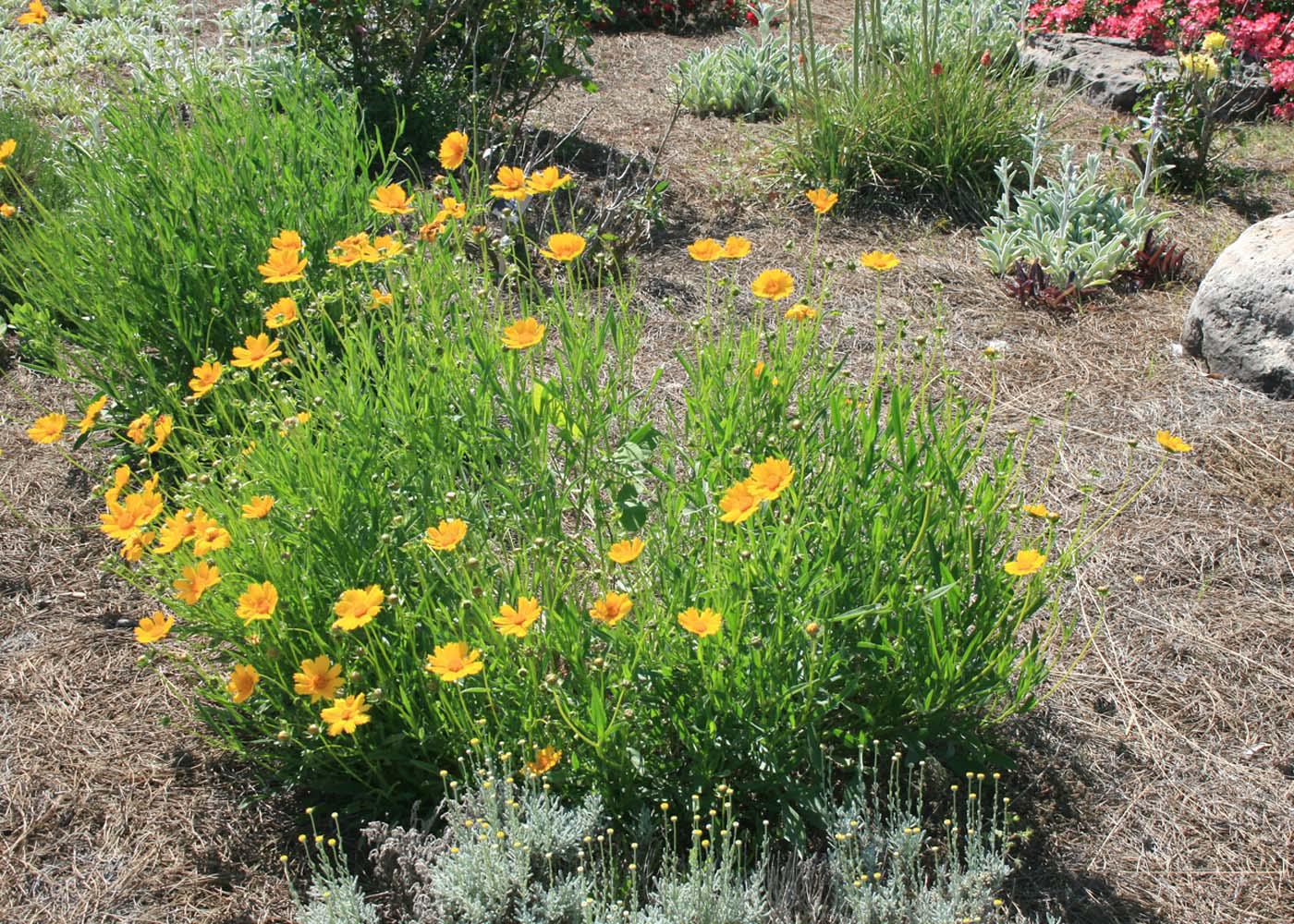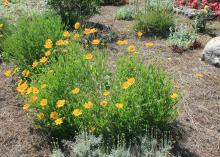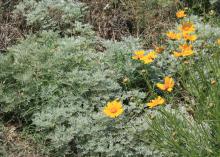Information Possibly Outdated
The information presented on this page was originally released on June 11, 2012. It may not be outdated, but please search our site for more current information. If you plan to quote or reference this information in a publication, please check with the Extension specialist or author before proceeding.
Coreopsis grandiflora is good garden choice
Yellow is a cheerful color that mixes and matches well in summer gardens. If your garden needs this versatile color, try Coreopsis, a tough group of plants that provides beautiful yellow and golden flowers from early summer to well into fall.
Although there are many species of coreopsis available for our Mississippi landscapes, if I had to choose just one, it would be Coreopsis grandiflora. The grandiflora in the name gives a clue to the landscape potential of this plant, which is sometimes commonly called big-flowered coreopsis. But whatever you call it, one thing is certain: the flowers are grand.
Coreopsis grandiflora can be a real workhorse in our hot and often dry summer gardens.
The leaves are a bright green and are formed around the crown of the plant. The flowering is nonstop, which makes this plant an easy choice for the home gardener. The golden-yellow flowers are held high above the foliage on tall, thin stems. These wiry stems are stirred by the slightest breeze and create sunny movement in the landscape.
Early Sunrise is probably the most readily available coreopsis selection in garden centers. Its flowers are semidoubled, resulting in a fuller bloom. More experienced gardeners can grow this selection from seed. If you like variegated plants, there is a selection called Tequila Sunrise, which came from a mutation found in Early Sunrise.
Plants that have blue and gray colors make good planting companions for Coreopsis.
Good choices include Artemisia, also called wormwood, which is a ground cover with finely cut silvery foliage, and lamb’s ear, which has fuzzy, muted sea-foam-colored leaves. Both of these ground covers will grow well underneath coreopsis. For a bigger plant, try Russian sage to provide a silvery backdrop for the yellow flowers.
Coreopsis grandiflora have few insect and disease pests. Crown rot can be a problem, especially in landscape soils that hold water. The best planting sites are well drained, and you can easily accomplish this using raised planting beds.
Coreopsis are a good choice for hot and dry planting locations, but for the best flowering performance, provide consistent soil moisture. This means supplemental irrigation should be available during drought.
Give these plants consistent fertilization for optimum flowering and growth. Add a couple of tablespoons of slow-release fertilizer at planting to help get the plants off to a good start. Every other week, use a water-soluble fertilizer with 20-10-20 or 20-20-20 analysis to help keep nutrition at proper levels.
Coreopsis grandiflora require little maintenance, but flowering is better if the spent blooms are deadheaded. They produce so many flowers that this may seem overwhelming, but doing a little every day keeps this chore manageable.
Divide Coreopsis grandiflora every three to four years. Always use a sharp spade or knife to make clean cuts and replant immediately. Your gardening friends will enjoy the gift of this beautiful flower.









